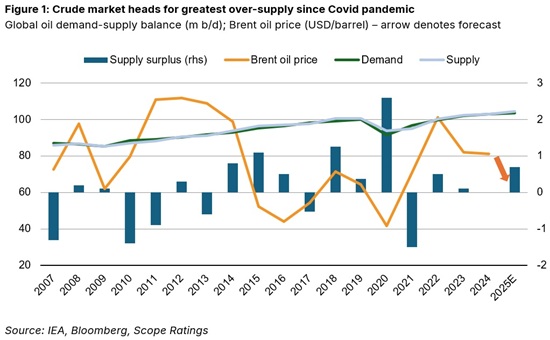Announcements
Drinks
Trade tensions, OPEC+ production hikes weigh down on oil & gas credit outlook
By Marlen Shokhitbayev, Corporates Rating Production
Though the shock is not as dramatic as 2020’s, the combination of supply- and the demand-side pressures will test the currently balanced outlook for integrated oil and gas companies (IOCs) despite their generally strong financial profiles.
On the demand side, the impact on the global economy of the protectionist tilt of US trade policy, including the all-out trade war with China, has introduced substantial uncertainty, undermining business confidence and stoking fears of a broader economic recession.
The full impact of the tariffs and retaliation from the US’s trading partners has yet to unfold – the Trump administration last week suspended most but not all the heaviest tariffs originally proposed – but it is likely to reduce global economic activity and, by extension, oil demand. The International Energy Agency (IEA) has just revised its forecast for growth in 2025 global oil demand to 0.7 m barrels a day (m b/d) from 1.0 m b/d a month ago, adding that risks to the forecasts remain rife given fast-moving macro-economic events.
OPEC+ production increase coincides with US trade-war uncertainty
On the supply side, the eight OPEC+ oil-producing countries agreed on 3 April to increase their combined crude oil output by 411,000 b/d, accelerating the pace of earlier planned increases.
The Saudi Arabia-led group which includes Russia cited "healthy market fundamentals and a positive market outlook" as justification for the move. These increases are part of a gradual and flexible reversal of the 2.2 m b/d voluntary production cuts, while the group stated that “the gradual increases may be paused or reversed subject to evolving market conditions”.
However, even before the OPEC+ announcement and Trump’s now suspended “reciprocal tariffs”, the oil market appeared to be oversupplied. In March, the IEA expected a supply surplus of around 0.6 m b/d in 2025. Recent developments are likely to widen the surplus significantly, unless lower oil prices mute drilling activity, and the US sanctions on some producers (e.g. Venezuela, Iran) limit oil supply.

IOCs are comfortably financed – for now
The strong balance sheets and flexible financial policies of European integrated oil and gas companies (IOCs) can absorb temporary supply and demand shocks, e.g. by reducing share buybacks or delaying if not reducing capital expenditure – or both (Figure 2).

This is our base case. We assume rational policy making will prevail, as none of the governments of the world’s largest economies involved has an interest in a prolonged recession. In addition, the governments of the OPEC+ countries rely on high oil prices to finance public spending. For example, the IMF estimates the fiscal break-even oil price at USD 96/barrel for Saudi Arabia and USD 90-100/barrel for Russia.
IOCs started the year with ample financial headroom should oil prices fall, easing immediate ratings pressure from recent declines. Nevertheless, given the considerable uncertainty hanging over the global economy due to the dramatic shifts in US trade and other policies, including defence, a prolonged period of significant oversupply in the oil market will put further downward pressure on prices, likely pushing Brent well below USD 60/barrel. Such relatively weak oil prices, if sustained over time, will have adverse consequences for the credit quality of IOCs.
Related research:
Sovereign credit: US policy shifts point to tariff-light, trade-war, economic-crisis scenarios, April 2025
US tariff increases to have uneven direct cashflow, credit impact on European corporates, April 2025
US trade policy: wide-ranging tariff increases heighten global credit risk, April 2025







